The Reward Is...More Work
How product managers are handling the work that shows up after they deliver
Your product is growing steadily. Continued growth is a priority.
You’re reviewing your latest requirements with the program management team, including a request to support customer-specific customizations.
You figure: if a program manager owned those updates, you’d finally have time to focus on new growth initiatives.
Their response:
“You need to remove that requirement.”
“You’re already handling it. No reason to change.”
You remember this happening the last time—when you asked for support with partner onboarding. Same story.
If this sounds familiar, you’re not alone.
This article explores:
Why this happens—even on successful, well-funded products
How it quietly pulls product managers out of their lane
What you can do to rebalance your work and protect your momentum
Why This Happens (Even on Well-Funded Products)
This isn’t a failure of execution. It’s a predictable pattern for growing products.
In the early stages, product managers are the glue. You patch gaps, answer every question, and unblock every customer. After a few diving catches, you become the go-to—because you know the most, and you care the most.
That’s a good sign. It means the product is working.
But success creates coordination gravity. Sales, support, delivery, and account teams start orbiting your inbox. It’s easier to loop you in than to build new processes or take ownership.
Meanwhile, operational headcount is constrained. Ops teams focus on high-volume, repeatable work. Your growing—but unique—product doesn’t make the cut.
So you stay in the center—whether you want to or not.
Your manager may suggest “escalating it.” But escalation often means: convince another team to take work they didn’t ask for.
Why This Drags You Down Over Time
Balancing today’s growth with tomorrow’s roadmap is one of the hardest parts of product management. You launched something new. It worked. But now the operational follow-through is pulling you under.
Your time shifts to:
Supporting sales
Coordinating onboarding
Following up with customers
Explaining internal processes
The same sticky features that drove success now demand constant attention.
Your focus is starved. Discovery suffers. Future initiatives stall.
Sure, maybe you contributed to this—through unwritten requirements or a few bluebird deals. But your value isn’t in patching process gaps. It’s in scouting out what’s next.
And the longer you stay in the loop, the harder it is to step out.
Eventually, the process depends on you.
No wonder program managers won’t touch it.
What Product Managers Are Doing Instead
You did the right thing getting your product off the ground.
You don’t need to keep doing everything.
Here are four ways product managers are reclaiming focus—and setting their products up to scale.
1. Productize the Repetition
What to do:
Spot repeatable requests. Build a lightweight tool, guide, or workflow to redirect them to the right team.
Example:
Sales keeps asking for help scoping deals. You build a sizing worksheet and price calculator, then train sales teams to self-serve.
Why it works:
You remove yourself from the critical path and scale your impact through tools.
2. Frame New Roles as Growth Enablers
What to do:
Tie operational roles (e.g. onboarding leads) directly to growth metrics like revenue acceleration or retention.
Example:
Customer onboarding is delayed by handoffs. You propose an onboarding coordinator role—framing it as a way to speed up revenue and improve Day 1 satisfaction.
Why it works:
Support is no longer seen as overhead—it becomes a growth investment.
3. Draw the Line Between Product and Scaling
What to do:
Set exit criteria to transition initiatives from product development to delivery or ops.
Example:
You pilot a new integration. Once a few customers are live, you document the process and hand it off to the delivery team.
Why it works:
Boundaries are clear. Others are empowered to lead ongoing work.
4. Build a Repeatable Transition Plan
What to do:
Design a handoff plan from the start—or retrofit one now. Include customer-facing changes and internal handoff metrics.
Example:
Customers email you directly with issues. You start introducing them to account and support teams, model the transition yourself, and shift communication through the right channels.
Why it works:
Customers get better service. You reduce personal workload while reinforcing the right system.
The Context Trap
These strategies work—but they don’t address the deeper issue.
In many organizations, you’re the only one with full context and motivation.
And unless that changes, you’ll stay stuck.
Here’s why others often don’t see the same urgency:
Product managers are closest to both customers and internal delivery teams
Product success often hides organizational gaps
There are no real incentives to redesign workflows that seem functional
You end up in a context trap:
The more context you carry, the more people rely on you.
And the more valuable that context becomes, the harder it is to hand off.
Why Others Don’t Step In
Program managers are skilled at managing timelines—but they’re incentivized around delivery, not continuous improvement.
Ops teams are wired for scale and efficiency—but not for customer experience.
Your product sits in limbo:
Too custom for operations. Too steady for program management.
How to Break the Trap
The key is to elevate your tactical fixes into a strategic maturity path.
Instead of asking “Who owns this?”, shift the conversation to:
“What capability is missing for this product to scale?”
That’s where a product maturity model comes in.
It helps stakeholders see the stepping stones to operational readiness
It makes system gaps visible, not personal
It reframes growth problems as cross-functional challenges—not just product’s burden
The goal:
Tie maturity to growth.
Show that investing in internal maturity isn’t maintenance—it’s what unlocks the next stage of your product’s journey.
Want to adapt this for your own product? Reuse these slides to support your ownership transition and maturity model. Grab these Success Trap slides with details on the product maturity model on the Premium PM Resources page. (Paid Subscribers Only).
Conclusion: Escaping the Success Trap Requires More Than Delegation
You don’t need to own everything forever.
But you do need to guide the transition.
Your early wins created value—and with them, complexity. If no one else is stepping in, it’s not always unwillingness. Sometimes the system simply isn’t mature enough.
That’s why handoff alone isn’t enough.
To truly escape the success trap:
Shift ownership intentionally
Add maturity to your product roadmap
Treat scaling as a product challenge.
Just like performance or security, maturity is a requirement—not an afterthought.
Because without maturity, growth stalls.
And without ownership, you stall.
Product managers are uniquely positioned to see across silos—and move the system forward.
One checklist, one transition, one capability at a time.
You don’t need to carry it all.
You just need to lead the next step.
Looking for more practical tips to improve your product management skills?
Check out Product Management Resources for free product management templates and guides.
TLDR Product listed Product Management IRL articles recently! This biweekly email provides a consolidated list of recent product management articles.
Connect with Amy on LinkedIn, Threads, Instagram, and Bluesky for daily product management insights.


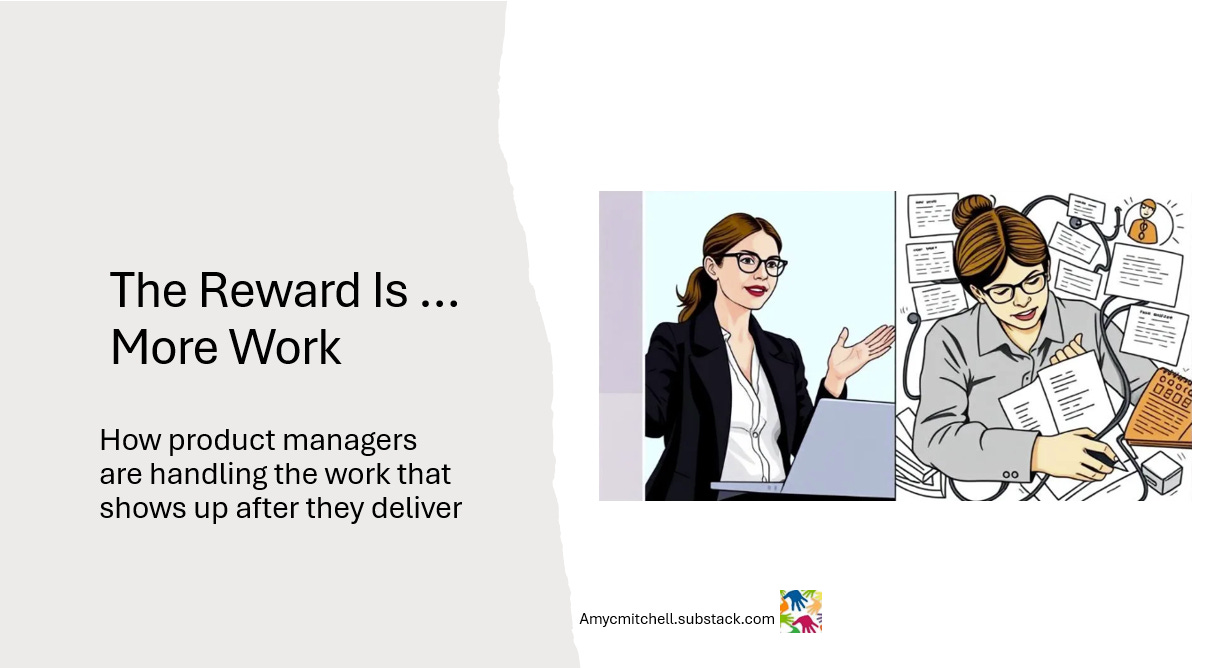
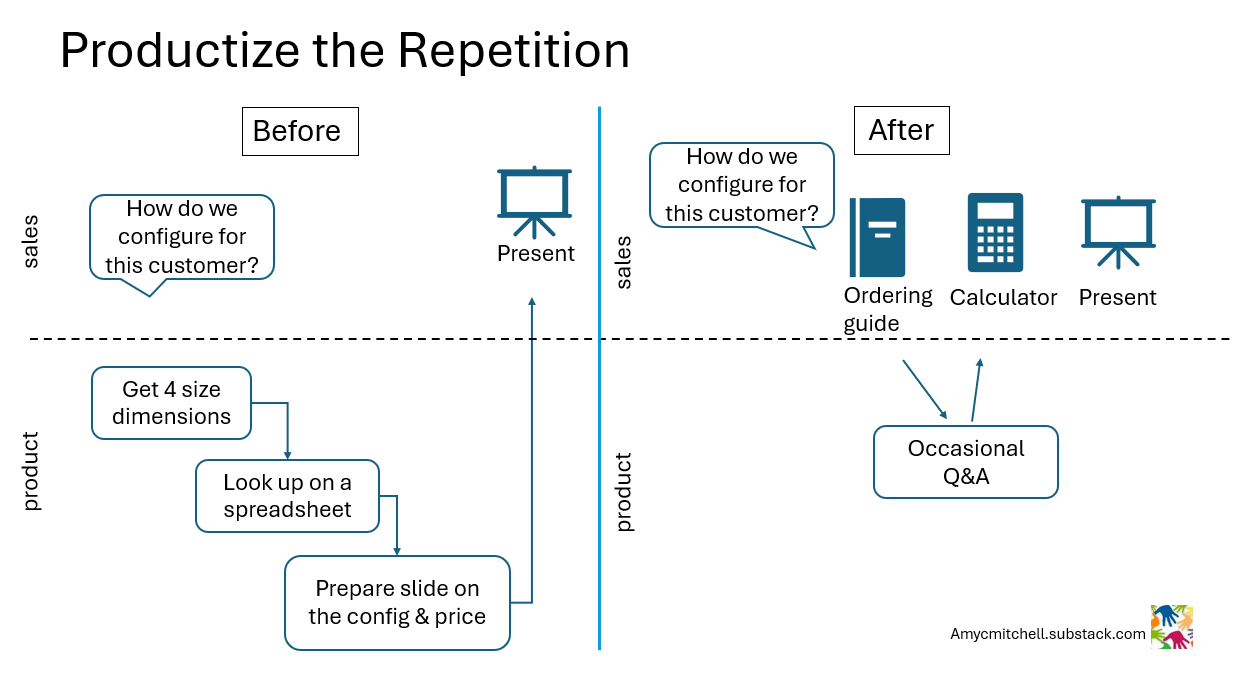
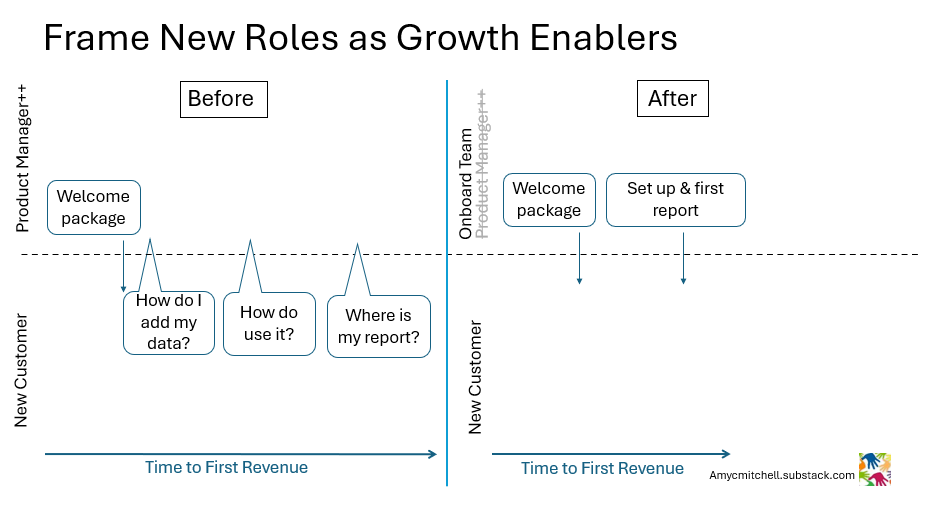
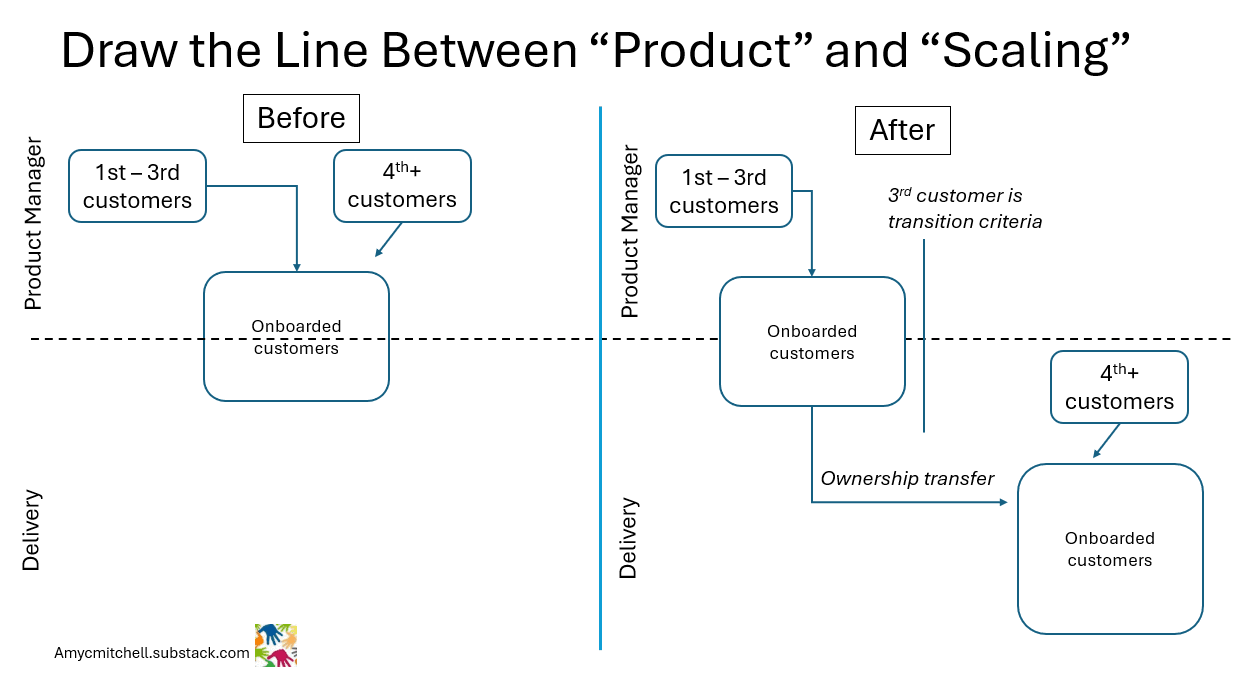
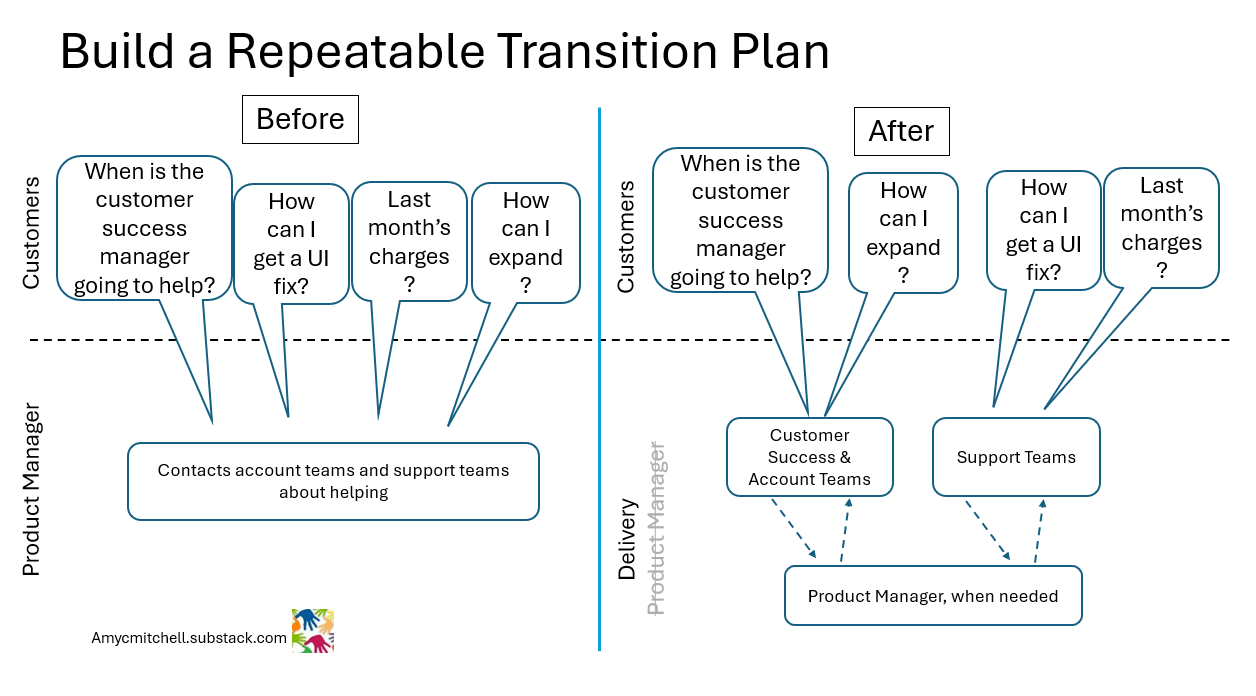
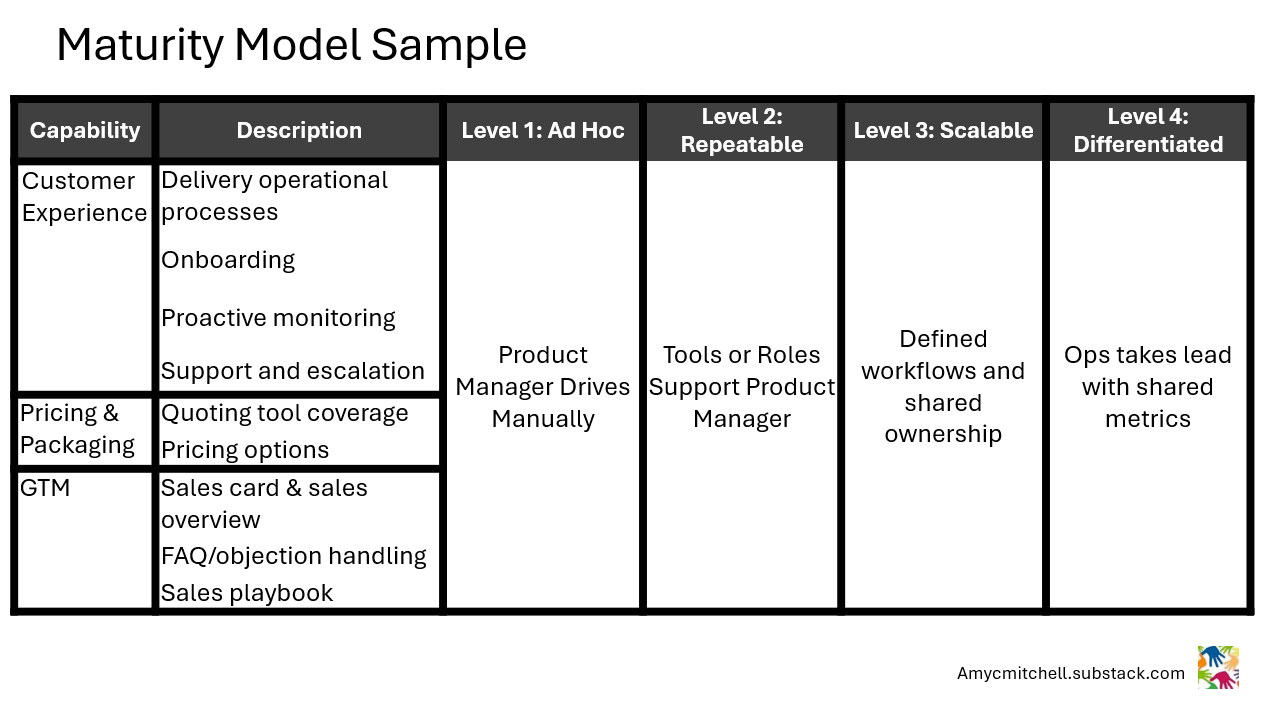
Although I do not like the phrase of the PM as the Mini-CEO there is a similarity: You should work on the product, not in the product and with success the ops-part of the product should grow. Thank you a lot for your insights on that topic!
Love this part! “You did the right thing getting your product off the ground.
You don’t need to keep doing everything.”